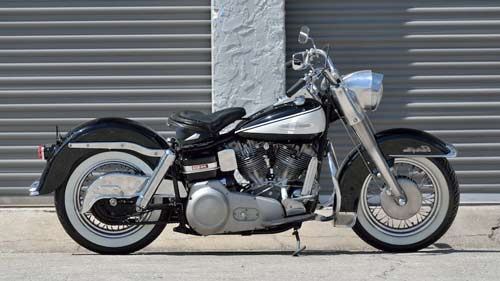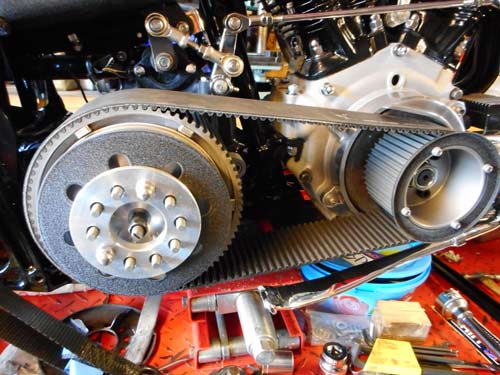If you are a Harley Davidson lover, it’s important to know which Shovelhead years to avoid. It will ensure that you’re investing in a reliable and long-lasting ride. Also, knowing the problems will help you in decision-making for good.
So, which model of Shovelhead Years to Avoid? It is not simple to reply. 1967, 1968, the late 1975s, and the last editions of 1983s can be avoided. The issues were largely related to oiling, electrical, and starter problems.
Since we need to know the years to avoid, we need to know which year it is and why it should be avoided. We will discuss all that along with other relevant information as well. So, keep on reading!
Shovelhead Years to Avoid: A Comprehensive Discussion
First, have a quick look at the entire journey of shovelhead for 18 years.
| Model Year | Users Review/Comment | Verdict |
| 1966 | Revolutionary in the context of time | Moderate compared to time |
| 1967 | Clutch and shifting problem | Should be avoided |
| 1968 | Expensive than competitors | Can be avoided |
| 1969 | Improved | Moderate compared to time |
| 1970 – 74 | Significantly improved | Can be taken |
| 1975 – 76 | Clutch disengagement problem | Should be avoided |
| 1977 – 80 | improved | Moderate compared to time |
| 1981 | Problems with speed acceleration | Can be avoided |
| 1982 | Problematic | Can be avoided |
| 1983 | Starter problem | Should be avoided |
In the table, we attempted to categorize the verdict into two groups. The ones that should be avoided are the ones that are advised to be avoided. ‘Can be avoided’ are actually user wishes because a motorbike may have certain downsides, yet people still buy it.
Shovelhead’s Early 80s Models were not Impressive at all
When it comes to the Shovelhead, certain model years may not be worth the investment and the early 80s models are among them.
- The 1981 model year had problems with speed acceleration. And this can be caused by various factors, such as issues with the carburetor, ignition system, or fuel delivery. As a result, riders may find the bike sluggish and unresponsive, which can detract from the riding experience.
- Moving on to the 1982 model year, this year also had its share of issues. Many owners reported problems ranging from oil leaks to electrical issues and general reliability concerns.
These issues can make maintaining the bike more difficult and expensive. Not to mention the added inconvenience of frequent breakdowns and repairs, however.
- The 1983 model year had a specific issue with the starter, which can be a major inconvenience for the rider. Especially when you are moving during colder weather or your bike has been sitting for a while.
If the starter has to be fixed or replaced, the repair might be costly. Because it raises the total cost of owning and maintaining the bike.
Initial Shovelhead Models should be Avoided
- When considering the 1967 Shovelhead model year, it’s important to note that there were known issues with the clutch and shifting mechanisms. Specifically, riders have reported issues with the clutch slipping, as well as difficulty shifting between gears.

As a result of these issues, many experts suggest that the 1967 Shovelhead should be avoided. It may be possible to address these issues through repairs or modifications, but the added expense and time required may not be worth the investment.
- On the other hand, the 1968 Shovelhead model year may be a more viable option for some riders.
But it’s important to note that these bikes can be more expensive than their competitors. That is because Yamaha and Honda offered better features compared to Harley Davidson in that recent years.
- However, these issues were mostly resolved by the 1970-year model. That includes an updated electrical system, improved handling, and a more powerful engine.
Which eventually made these early years a decent choice for riders who prioritize vintage authenticity and nostalgia.
Some Models had Clutch Issues
The 1978 Shovelhead had issues with the clutch. Some riders reported that the clutch would slip or not engage properly, making it difficult to safely ride and control the motorcycle.

1975-76 model years had the same issues. But according to some users, the 1975-76 models had other problems as well.
- Along with the clutch issues, these models had engine and fuel consumption issues too. Therefore, these model years should be avoided.
Nonetheless, caution should be exercised while dealing with this model year.
- Despite having a bigger and stronger engine than earlier versions, it suffered numerous oil, fire, and clutch problems. Hence, it may be a difficult and sometimes dangerous journey because of these issues.
- Additionally, the difficulty in refilling oil can make it an expensive and time-consuming motorcycle to maintain.
In that sense, it may be better to look for a more reliable and better-maintained motorcycle from a different year or model.
Which Model Should I Take?
If someone is interested in a model from the AMF takeover years, they should avoid the 1971 to 1973 models. These years had problems with pinion shaft oiling, which can lead to severe engine damage.
However, if someone is interested in a later model, they should go for the Shovelhead models produced after 1974. By 1977, these models had become relatively reliable, according to the users’ reviews.
The personal experience of the owner with a 1978 1/2 model also supports this claim. However, it should be noted that this particular model might work well if you do a conversion from Prestolite electronic ignition to points at 20K miles.
It actually indicates potential issues with the electronic ignition system.
Overall, based on the user’s review, it is recommended to choose an early Shovelhead model from 1966 to 1969. Or a later model produced after 1974, preferably 1977, may ensure better reliability.
Besides, it is crucial to remember that older models may require more maintenance and repairs due to their age. It may not provide the same level of performance as modern motorcycles.
FAQs
We have something more to offer you in this section. Keep reading please.
Q: What were the good model years for the Shovelhead?
It is tough to say. It depends on the users. Despite having problems with oiling, the 1967 model is still a favorite for some users. Additionally, early 70s models are said to have fewer issues. So, it is 1970 and the years after that, which were best.
Q: What was Harley Davidson’s replacement for Shovelhead?
The Harley Davidson Panhead engine was popular in the 1950s. It was succeeded by the Evolution Big Twin engine, which incorporated numerous design improvements over the Shovelhead.
Nonetheless, the Shovelhead remains a beloved engine among enthusiasts, thanks to its unique design and classic styling.
Q: Which model of shovelhead has the best horsepower?
In between the 18 years of production, the shovelhead has a horsepower of around 65. The model year 1975 had the most hp as per the horsepower records, keeping it at 65 in spite of having clutch issues.
Conclusion
All in all, investing in a Shovelhead model of Harley Davidson requires thorough research and understanding of the model years to avoid. The early 80s models, such as the 1982 – 83 models, had issues with speed acceleration, oil leaks, electrical problems, and starter issues.
And the 1967 model year had the clutch and shifting problems, while the 1978 model year had issues with the clutch and oil refilling. Those models were less reliable and more expensive to maintain. Hence, avoiding these models based on users’ reviews is recommended.